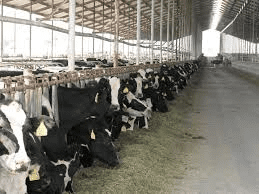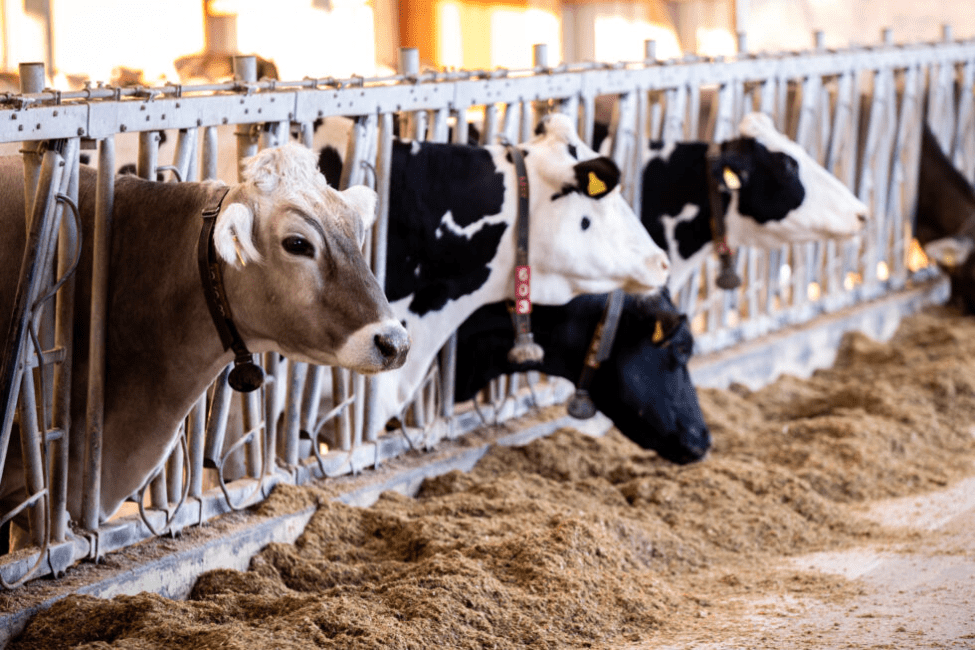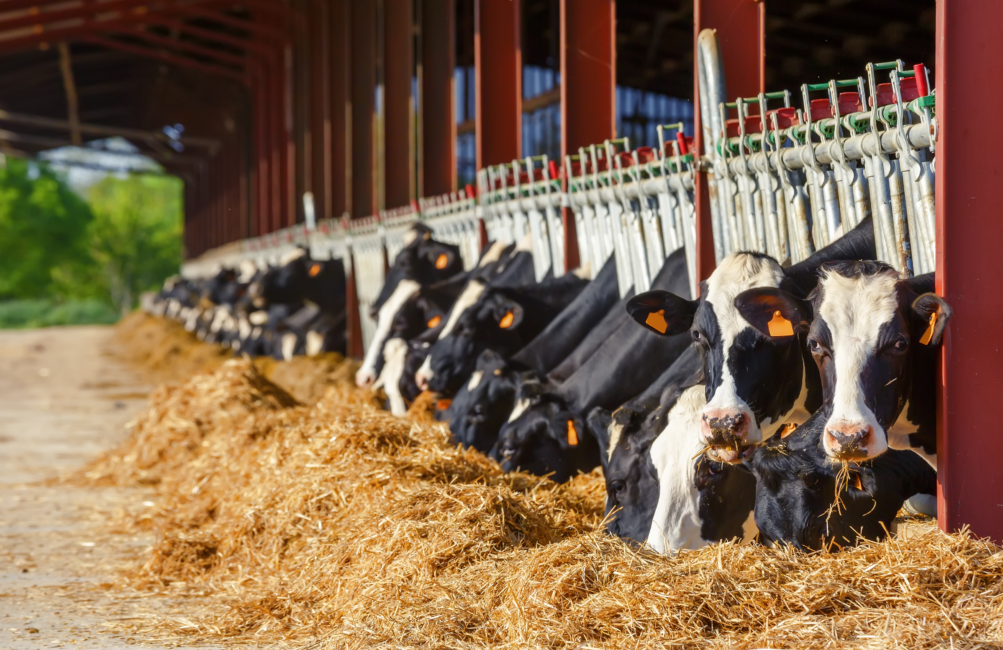There is a wide distribution of biologically-active constituents throughout the plant kingdom, particularly in plants used as livestock feedstuff and in human nutrition. Many plant components and seeds of legumes and other plant sources contain in their raw state wide varieties of anti-nutrients which are potentially toxic.
The knowledge that these compounds elicit both toxic and advantageous biological responses has given rise to several investigations in recent times as to their possible physiological implications in various biological systems.
Some of these chemicals are known as secondary metabolites and they have been shown to be highly biologically active and most of these secondary metabolites elicit very harmful biological responses, while some are widely applied in nutrition and as pharmacologically active agents (Soetan, 2008).
Micro-Organisms
Micro-organisms are biological contaminants of the natural environment and are prese nt in all feedstuffs. They persist after crops have been harvested from the fields and in animal carcasses prior to rendering.
Because bacterial and field fungi do not thrive at moisture levels below 20 percent, post-harvest processing of commodities and animal renderings involving heat, chemical and mechanical extraction, and dehydration eliminate most of the original contaminating microflora.
Fungi spores, which are resistant to harsh processing treatment, may remain dormant in the processed feedstuff until more favourable conditions once again permit their proliferation.
Read Also: Impact of Livestock Diseases and Solutions
Factors Affecting Fungal Growth in Feedstuffs

Recontamination of feedstuffs by adventitious micro-organisms during storage is of primary concern to the feed processor. Adventitious storage fungi grow at moisture content (15 to 20 percent) in equilibrium with a relative humidity of 70 to 90 percent and a re considered the principal spoilers of feedstuffs in storage. When the relative humidity falls below 65 percent no growth occurs.
Under favourable conditions, fungi can raise the temperature in their immediate enviro nment to 55 C with con commit tent increase in moisture content of the affected feedst uff to as high as 20 percent. When this occurs, secondary spoilage by bacteria takes place.
The most common fungi involved in the spoilage of feedstuffs belong to the Aspergill us spp. and the Penicillium spp. These grow at temperatures up to 55 C and at a mini mum, relative humidity of 65 percent. They are most destructive when temperatures e xceed 25 C and relative humidity exceeds 85 percent.
Detrimental Effects of Storage Fungi on Feedstuffs

The chief effects of storage fungi on feedstuffs are:
- Mycotoxin production,
- Heating,
- Moisture increase, and
- mustiness (staleness).
1. Mycotoxin production
Mycotoxins are compounds produced by fungi growing in infested agricultural commodities. They are toxic to both humans and animals. The aflatoxins, a group of highly toxic and carcinogenic metabolites produced by Aspergillus flavus are perhaps the most important among mycotoxins contaminating feedstuffs.
Transmission of the toxin to milk, meat, and eggs through farm animals feeding on contaminated feed poses an increasing health hazard. Studies on the toxicity of aflatoxin to fish have not been extensive but toxicity to trout (oral LD 50:0.5 mg/kg body weight) is comparable to toxicity to ducklings, the latter recognized as the most susceptible animal to aflatoxin poisoning.
Feedstuffs known to be contaminated by A. flavus include: groundnut cakes, maize, sorghum, sunflower, cottonseed cakes, copra, and cassava. To produce aflatoxin, however, A. flavus must be present alone in a practically pure culture. The presence of other fungi, yeast, or bacteria seems to interfere with aflatoxin production.
Crops such as peanuts, cottonseed, and copra are high aflatoxin risks precisely because A. flavus often infest them as a practically pure culture with few or no other microflora.
In addition, the fungus produces the toxin in these crops at relatively low moisture levels, 9 to 10 percent, compared with 17 to 18 percent moisture for most feed grains. Feed grains such as maize and sorghum grown in the tropics, therefore, also pose high risk.
Read Also: Introduction to Fisheries Ecology
Mycotoxin Challenges in Production of Poultry Feed During Rainy Season

Mycotoxicosis is a major problem in poultry industry. There are about 50 fungi specie s harmful to poultry known to produce toxins, which are collectively called as mycotoxins. These mycotoxins are metabolites produced by fungi during metabolism of nutrients present in feeds and feed ingredients.
High moisture content in fresh maize and grain highly favour mould growth. Many mycotoxins are stable during grinding and crushing in mill and also during feed storage. The type of fungus, temperature, moisture and grain determine which toxin will be produced and in what amount.
According to the United Nation’s Food and Agriculture Organization (FAO), approximately 25% of world’s grain supply is contaminated with mycotoxins. The economic loss due to this has been estimated to run into millions of rupees annually.
Individual fungus usually produces more than one toxin. It is uncommon to find a sing le mycotoxin occurring under field condition. Usually they occur in combination of tw o or more.
These toxins therefore often act in synergism. This means that their combined effect is much more damaging than that of the individual mycotoxins. In feed, even if aflatoxin content is very low, its harmful effect is greatly increased by the presence of ochratoxin, even though its presence may be at a low level.
Aflatoxicosis and Orchatoxicosis mycotoxicosis are the most commonly seen mycoto xicosis in poultry. Other mycotoxicosis is less common. Mycotoxicosis is wide spread under hot and humid Indian conditions as well with poor storage facilities.
Aflatoxicosis
Aflatoxins are a group of closely related, highly toxic, mutagenic and carcinogenic compounds. Aflatoxin is the most common and the most important mycotoxin. It is a highly toxic mycotoxin produced by various species of fungi Aspergillus.
Both the fungi are widespread in the environment and produce aflatoxin in warm (30-35°C) temperature and high humidity conditions. Mould growth occurs more rapidly when moisture content is more than 10% and temperature at 28-30°C.
Aflatoxin can withstand extreme environmental condit ions and are highly heat stable. Aflatoxin contamination is more common in grains or handled in a tropical country like India.
Handling and storage of grains in these condit ions anywhere will also stimulate production of aflatoxin. Poultry feed and ingredients are easily prone to fungal growth and aflatoxin formation.
Aflatoxin is found in maize, groundnut cake, rice, cottonseed, millet, sorghum and other feed grains. Its concentration at field levels is 20-100 ppb and may even up to 500 ppb.
Mycotoxin may get 30-50 times more concentrated in the broken grain as compared to whole grain. Naturally occurring aflatoxin contains B1, B2, G1 and G2. Designations B and G are given after their Blue (B) or Green (G) colour reaction to fluorescent light. Of all, aflatoxin B1 is usually found in the highest concentration and is also the most toxic. It damages mainly liver.
Aflatoxin is stable once formed in grains, and is not destroyed during normal grinding and crushing in the mill and storage. Young birds are more sensitive to aflatoxin than adult. There are also large species differences as duck being 10 times more sensitive than chickens.
Mycotoxin may get 30-50 times more concentrated in the broken grain as compared to whole grain. Naturally occurring aflatoxin contains B1, B2, G1 and G2. Designations B and G are given after their Blue (B) or Green (G) colour reaction to fluorescent light.
Of all, aflatoxin B1 is usually found in the highest concentration and is also the most toxic. It damages mainly liver. Aflatoxin is stable once formed in grains, and is not destroyed during normal grinding and crushing in the mill and storage. Young birds are more sensitive to aflatoxin than adult. There are also large species differences as duck being 10 times more sensitive than chickens.
Post Mortem Findings
In the affected birds metabolic changes lead to enlargement of liver, kidney and spleen as well as decrease in the size of bursa of fabricus, thymus and testes. With high dose exposure, fat accumulates inside the cell of liver as clear vacuoles.
As a result, liver is greatly enlarged, yellow and friable (easily broken). Small haemorrhages may occur following injury due to decreased clotting factor synthesis and increased fragility of minute blood vessels. This leads to a condition known as bloody thigh syndrome.
Aflatoxin is rapidly excreted in the bile and urine and does not accumulate or persist in the body tissues. This explains the rapid recovery of egg production and hatchability after ingestion of toxin has stopped.
Harmful Effects of Aflatoxin
Aflatoxicosis causes loss of egg production (layer), anaemia, haemorrhages, liver dam age, paralysis and lameless, poor performance, feed efficiency (in broiler), increased mortality from heat stress (in broiler) and increased susceptibility to infectious disease both in broiler and layers.
Aflatoxin affects egg production by reducing synthesis and transport of yolk precursors in the liver. Egg size, yolk weight and yolk as percent of total egg size are decreased. Aflatoxicosis affects weight gain, feed intake, feed conversion efficiency, pigmentation, eggs production and reproductive performance of male and female.
Even less than 100 ppb in broiler can result in poor feed conversion and r educed weight gain which may be due to liver damage and reduced nutrient absorption. Once the damage has been done, birds may not fully recover even if they return to toxic free ration.
Immuno suppression
Aflatoxicosis suppresses the immune response. As result, aflatoxicosis is associated with increases susceptibility to infectious disease. In chicken, aflatoxicosis increases susceptibility to or severity of Caecal Coccidiosis, Marek’s disease, E. coli infection, Salmonellosis, Inclusion Body Hepatitis and Gumboro disease.
Vaccination failure is em erging as result of aflatoxicosis in chicken. Aflatoxicosis induced immune suppression is due to reduction in the size of bursa of fabricus, thymus and spleen. Immune suppre ssion in breeders can be serious as it reduces the passive maternal immunity.
Ochratoxicosis
Ochratoxicosis is caused by the mycotoxin ― Ochratoxin. Its name is derived from the fungus ― Aspergillus ochraceous. Ochratoxicosis is less common in poultry than aflatoxicosis, but is much more harmful.
Although, aflatoxin B1 is the most potent of all aflatoxins, ochratoxin is three times more harmful. Thus, Ochratoxin are among the most toxic mycotoxins for poultry. They damage mainly kidney.
Apart from Aspergillus ochraceous, five other species of Aspergillus also produce it. Ochratoxin are formed on numerous grains and feed stuffs and are of four types A, B, C and D.
Of these, orchatoxin A is the most toxic, most common, also produced in greater quantities and is relatively stable.
Ochratoxin occurs in maize, rice, most small grain and in animal feeds. It readily forms in poultry feeds under conditions of high tem perature and high moisture.
Field levels are between 20-200 ppb, but may be even up t o 2.0 ppm. In the naturally occurring disease, ochratoxin A is the main toxin involved.
Ochratoxin B and C occur only with high concentration of ochratoxin. Young birds are most sensitive to ochratoxin ingestion. Severe (acute) ochratoxicosis causes death du e to kidney failure.
Harmful effect of Ochratoxin
Ochratoxins is broilers causes mortality and failure to gain weight. Growth rate, feed c onversion and pigmentation are also affected. Ochratoxicosis in growers delays sexual maturity.
Ochratoxin can reduce egg size and interior quality. Immuno-suppression by ochratoxin-A is mainly due to reduce size of thymus, although all lymphoid organs are affected.
Cell mediated immunity is significantly damaged in broilers. Antibody mediated immunity is affected after depletion of antibody containing cells in lymphoid tissues. As a result, vaccination response is severely damaged and the severity of concurrent Coccidiosis and Salmonellosis is increased.
Symptoms
Affected birds are depressed, dehydrated, usually pass more urine and die from kidney failure. Those that survive are stunted, poorly feathered and have anaemia and immune-suppression (Ochratoxin level more than 0.6 ppm).
There may be reduced weight or develop wet dropping causing increased numbers of stained eggs. There is also a decrease in egg production and hatchability at ochratoxin level more than 2.0 ppm and poor performance in progeny derived from affected hens.
Mycotoxin binders
Mycotoxin binding agents include activated charcoal, yeast cell wall products, synthetic Zeolites and mined mineral clays such as alumino-silicates, sodium bentonite.
Effect iveness of these compounds depend upon the adsorptive capacity, their structure, their purity and the characteristics of the targeted mycotoxin.
- Zeolites (Sodium Zeolites A) and aluminosilicates have strong affinity to aflatoxin and form a stable complex.
- Hydrated Sodium Calcium Aluminosilicates (HSCAS) and nutrients with antioxidan t capabilities (Selenium, Methionine and Vitamin E)
- HSCAS and Virginiamycin
- Mannan Oligosaccharides, developed by esterifying yeast cell wall glucomannans, can specifically adsorb Aflatoxins, Ochratoxin and Fusariotoxins.
- Dietary supplementation of activated carbon reduces the toxic effects of many insec ticides, pesticides and other toxins by adsorption and elimination in the faeces.
Treatment
- Toxic feed should be removed and replaced with uncontaminated feed. Poultry usually recover from most mycotoxicosis soon after an uncontaminated feed is available.
- Increase the dietary levels of protein. The mycotoxins affect the protein and amino acid metabolism. Increasing the dietary level of proteins can minimize the ill effects e specially when uncontaminated with aflatoxin. Increase also the vitamin supplementat ion.
- Supply of methionine and other sulphur containing amino acids, over and above th e requirement can protect the chicks from growth depressing effects of aflatoxin.
- Treatment of bacterial or parasitic diseases.
- Poor management is particularly harmful to poultry stressed by mycotoxins and sho uld be improved.
- Liver tonics may be given. Additional amount of lipotropic agent like choline help s in minimizing liver damage.
- Vitamin D3 supplementation can minimize the adverse effect of aflatoxin, such as leg weakness and poor egg shell quality.
- Mycotoxins are free radical generators and therefore challenge the antioxidant res ponses within the poultry. Therefore, increase the supplementation of vitamin E, vita min C and selenium.
Control of Mycotoxins
Occurrence of mycotoxins in grains is extremely common and therefore requires a pro gramme for controlling their ill effects in poultry.
- Purchase a clean feed stuff.
- Discard the grains suspected of contamination (i.e. mouldy and caked feed).
- Keep the moisture of grain less than 12%.
- Sun drying is the best method to prevent mould growth. But, it does not destroy the toxin.
- Store the feed and ingredients in well ventilated dry place; which is water, insect an d rodent proof.
- Adequate ventilation of poultry house to reduce humidity (removes moisture availa ble for fungal growth and mycotoxin formation in feeders).
- Avoid storage of feed for more than a week.
- Mycotoxin may form in decayed, crusted feed in feeders, feed mills and storage c ontainers. Therefore, regular inspection of feed containers is essential.
- Withdraw toxin contaminated feed immediately.
- Pelleting feed destroys fungal spores and decreases fungal burden. The combination of pelleting and antifungal agent has additional effectiveness.
- However, despite all the precautions, mycotoxins do get into the feed. Therefore, to deal with this difficult problem, the most practical way is to use effective mould inhi bitors and scientifically tested broad spectrum toxin.
- The most effective method of neutralizing mycotoxins already in feed is binding them to an inert compound therefore they cannot be absorbed from the intestines.
The most appropriate practices for mycotoxin control are:
- Prevention of fungal growth on crops in the field, at harvest time, during storage of f eedstuffs and processing of feed.
- Application of appropriate mycotoxin binder in order to achieve good productivity and economy.
- As with most poultry diseases, prevention is more economical than treatment.
Heating and moisture increase
Mould growth in feedstuffs is accompanied by rising temperatures and moisture content. Aspergillus glaucus, which has a minimum moisture requirement of 14.5 percent, is the first significant species involved during mould infestation of feed grains.
Temperature elevation that accompanies this initial attack flavours the proliferation of a second species, A. candidus, which raises the moisture level of the infested grain to 18 percent or higher.
At such high moisture levels, A. flavus activity becomes intense and tot al destruction of the wholesomeness of the feed grain becomes complete. Fungal activity in stored feed grains is not often apparent until after serious damage is done.
This is because such activity takes place not near the surface where temperature gradients produced by such activity are quickly abolished, but within the interior of the storage container.
Silos for grains should, therefore, be equipped with temperature sensors to provide early warning of trouble. Similar preventive measures are not possib le for bagged material.
The common practice of storing bags of grains in large piles to minimize and control insect infestation actually promotes fungal activity, especially in the tropics.
The sweating of bags within a large stack is evidence of serious fungal damage to the stored grain. The surface of such bags will feel warm to the touch, and w hen a hand is inserted into the grain, it will actually feel hot.
Staleness
Feedstuffs that are damaged by fungi tend to become lumpy. Feed grains suffer discolouration while damaged maize turns a dark brown with some blackened kernels being evident. The grain also exhibits a characteristic bluish sheen. Staleness or mustiness is another characteristic of commodities damaged by fungi.
Control
The prevention of mould contamination of stored feedstuffs depends mainly on the successful control of insect infestation, because the destructive activities of insects often create conditions favourable to mould; viz., increased moisture and temperature and th e destruction of the protective hulls of feed grains expose their moist interiors.
There is no effective way of eliminating mould, although effective measures have been developed to control their growth in compound feeds. These measures include the use of propionate and, more recently, gentian violet.
